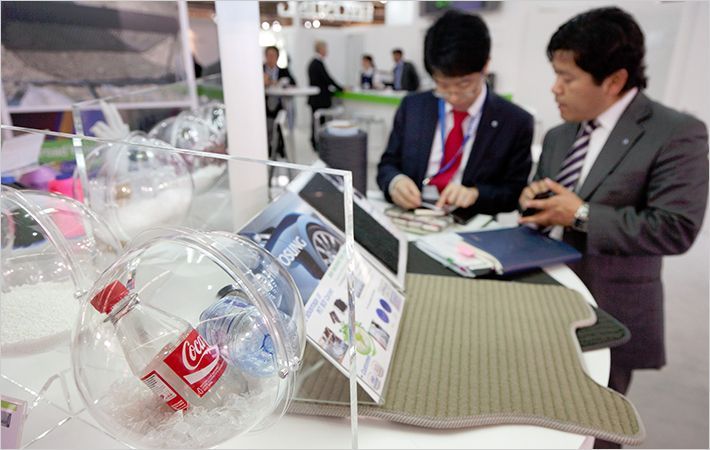At ITMA 2011 VDMA will present its sustainability initiative BLUecoMPETENCE to the textile world.
BLUecoMPETENCE explains and positions the machinery manufacturers as the technical problem-solvers regarding the requirements of the society of today and of the future: saving energy, material and resources. For the campaign's kick-off in Barcelona the focus is on energy efficiency. The Technology and Research Advisory Board of the VDMA Textile Machinery Association has compiled the guide “Conserving resources – secure savings-potential”. For textile machinery it describes parameters influencing its energy efficiency and prerequisites for a comparable assessment.At ITMA 2011 VDMA will present its sustainability initiative BLUecoMPETENCE to the textile world.
BLUecoMPETENCE explains and positions the machinery manufacturers as the technical #
New guide available
The guide is obtainable at the VDMA-booth (H5-5UL5 – under Linkway). “The guide on energy efficiency shall help to make the discussion about efficiency criteria, CO2 footprint and comparability more objective”, describes Thomas Waldmann, Managing Director of the VDMA Textile Machinery Association the target of the new publication. In a nut-shell, some VDMA positions, based on in-depth engineering knowledge and well-founded analyses are as follows:
Textile machinery is not a consumer good
A textile machine is not a consumer product that is designed for standard applications and comparable user requirements. Even textile machines of a particular product type are usually designed for the different demand profiles of the textile manufacturer.
A large number of influencing parameters determine consumption
There is a large number of parameters that determine the energy efficiency of a textile machine or a textile process. The textile manufacturer, the demands on the textile product, the material, the fibre supplier and the manufacturer of the machines all have an influence on setting those parameters and therefore on the energy efficiency.
Defining balance envelopes and work processes
Nobody wants to compare apples with oranges: The energy consumption of a machine category can only be determined on the basis of an agreed work process or operating point. Statements on energy consumption are therefore only valid for each process under consideration and the defined parameters.
CO2 footprint – also the responsibility of the textile manufacturer
A statement about energy consumption is only significant in relation to the amount of product manufactured (kWh/kg product). This applies equally to the equivalent of the CO2 footprint (CO2/kg product). A reliable CO2 footprint for the operating phase must take into consideration detailed data about generation of power and thermal energy.
Proper machine operation
Energy-efficient textile machines are a prerequisite for energy savings. In a complex textile process, however, only the proper use of the machines guarantees the expected total energy saving. Greater transparency of the relationships between production settings and resulting energy consumption helps to optimize processes. With a corporate policy which follows the Life Cycle Cost approach (e.g. VDMA Specification 34160) for investments, the right decisions can be made in many cases even from an ecological perspective.
Spare parts influence energy efficiency
Textile manufacturers can exercise a decisive influence on the energy efficiency of their production technology even through the choice of spare parts and service intervals. Lack of maintenance of textile machinery and the use of inferior wearing parts reduce the efficiency of machinery and increase energy consumption.
Labelling is linked to ambitious requirements
Market transparency is important, but when it comes to capital goods, labels are not a cure-all. Above all, they are by no means a “simple solution” for a complex product such as a textile machine. Labelling in mechanical engineering is subject to demanding requirements – only if they are met, can machine labels offer added value!
The VDMA Textile Machinery Association and its member companies are looking forward to discuss with textile manufacturers from around the globe the factors for a comparable assessment of the energy efficiency of textile machinery at ITMA in Barcelona.
VDMA Textile Machinery Association

